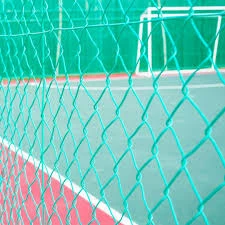Garden Stakes for Climbing Plants Support for Your Vertical Garden
Creating a lush, vibrant garden filled with climbing plants can transform any outdoor space into an enchanting paradise. However, to ensure these plants thrive and reach their full potential, proper support is essential. This is where garden stakes come into play. Offering a variety of materials, designs, and sizes, garden stakes are fundamental tools that help climbing plants maintain their structure, health, and beauty.
Understanding Climbing Plants
Climbing plants, also known as vines, have an innate ability to grow upward, whether through natural means like twining or clinging to surfaces. Popular examples include varieties such as clematis, morning glories, and climbing roses. While these plants can naturally cling to walls, trellises, or fences, they often require additional support as they grow. This is where garden stakes become invaluable.
Types of Garden Stakes
When selecting garden stakes for climbing plants, gardeners have a myriad of options to choose from. Here’s a closer look at some common types
1. Bamboo Stakes Lightweight and biodegradable, bamboo stakes are an excellent choice for gardeners looking for a natural aesthetic. They are durable, easy to install, and blend seamlessly into the garden environment.
2. Metal Stakes Offering strong support, metal stakes are often coated to prevent rust and corrosion. They come in various heights, making them suitable for even the largest climbing plants. These stakes are particularly useful for supporting heavier vines that require sturdy support systems.
3. Wooden Stakes Classic wooden stakes can give a rustic feel to the garden while providing good support for climbing plants. They can be easily found in various lengths and diameters, allowing for customization based on specific plant needs.
garden stakes for climbing plants

4. Trellises and Supports While not traditional stakes, trellises provide a fabulous option for climbing plants. These can be made of wood, metal, or plastic, and come in different designs to create beautiful vertical elements in the garden.
Installing Garden Stakes
The installation of garden stakes is a straightforward process that can greatly benefit your climbing plants. Here’s a simple step-by-step guide
1. Choose the Right Location Identify where your climbing plants will grow and position the stakes appropriately. Depending on the plant's growth habit, stakes may need to be installed near the base or in a zig-zag pattern for maximum support.
2. Select the Right Size Ensure that the height of the stakes is appropriate for the anticipated growth of your climbing plants. Stakes should ideally be taller than the projected maximum height of the plant to avoid early support failures.
3. Secure the Stakes Drive the stakes into the soil firmly, at least a third of their length should be buried underground to prevent them from tipping over as the plant grows.
4. Guide the Vines As the plants start to climb, gently tie the vines to the stakes using soft ties or twine to prevent damage. This will encourage them to follow the stake as they grow.
Conclusion
Utilizing garden stakes for climbing plants not only enhances the aesthetics of your garden but also supports the health and well-being of your plants. With an array of materials and designs available, it's essential to choose the right kind of stake that aligns with your garden's overall theme and the specific needs of your climbing plants. Properly installed, these stakes will allow your green friends to flourish, bringing life and color to your outdoor space. So, whether you're an experienced gardener or just starting, incorporating garden stakes into your planting strategy will surely elevate your gardening experience.
















